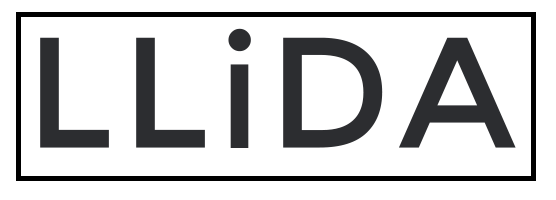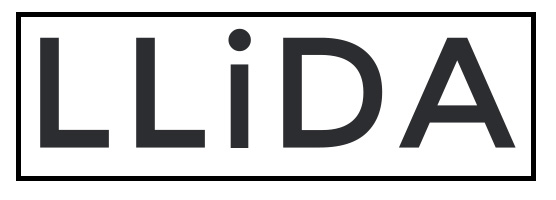Re-articulating the challenge
The challenge we outlined at the start was to transform:
- The kinds of capabilities valued, taught (for) and assessed
- The ways in which learners’ capabilities are supported and assessed
- The value colleges and universities place on ‘literacies of the digital’ and the investment they make in staff and student skills
We can now add detail to these three challenges. New capabilities and learning goals must help students to deal with:
- economic uncertainty
- high competition for employment in the global knowledge economy
- increased levels of alternative, contract-based and self-employment
- the rise of interdiscipinarity and multi-disciplinary teams focused on specific tasks
- a networked society and communities
- multi-cultural working and living environments
- blurring boundaries of real and virtual, public and private, work and leisure
- increasingly ubiquitous and embedded digital technologies
- distribution of cognitive work into (human and non-human) networks of expertise
- rapid social and techno-social change
In supporting those capabilities, support staff and curriculum teams must:
- Design flexible learning opportunities
- Situate those learning opportunities, where possible and appropriate, in authentic contexts (workplace, community, placement)
- Design learning opportunities for highly interconnected individuals, operating in distributed networks of expertise
- Continually review how technologies are integrated into curriculum tasks
- Continually review learners’ techno-social practices and the practices of professional and scholarly communities (anticipating that these will be different and that helping learners negotiate the differences will become part of the pedagogic agenda)
- Support learners to use their own technologies and to develop effective strategies for learning with technology
- Use assessment and feedback to encourage innovation in learners’ approaches to study, rewarding exploration as a process: current assessment regimes often reward conservatism
- Support learners’ developing self-efficacy and self-direction in learning, empowering them to navigate increasingly complex learning landscapes
- Support learners’ personal reflection, progression and planning, for example by engaging with e-portfolios and learning records
In changing cultures of learning to place greater value on ‘literacies of the digital’, institutions must
- engage and motivate students to develop learning literacies by”
- monitoring, supporting and assessing digital competencies across the learning experience
- articulating the educational benefits and importance of digital literacies
- recognising and rewarding the expertise that digitally proficient students can offer to others in the learning community
- using rich learner-related data to support portfolio-building, personalised advice and guidance, and where appropriate personal curricula and learning environments
- enabling learners to record a wide range of achievements and to present rich accounts of their learning history to different audiences
- engage staff in rethinking their practice by:
- realigning reward structures around innovation in learning and teaching
- supporting flexibility, stakeholder-responsiveness, and innovation in curriculum design
- making learning development an explicit concern of teaching staff
- fostering digital scholarship and digital professionalism, linked to changes in teaching practice
- engage employers and other stakeholders:
- in meaningful dialogue, recognising that the stated needs of graduate employers are only one perspective on employability in a rapidly-changing social and economic landscape
- in continuous review of the purposes and outcomes of the curriculum
The social and economic agendas of upskilling more of the population, widening participation, and supporting lifelong learning, mean that university and college learners are more diverse than ever before, with a wider range of educational and ICT experience. Since literacy provision ideally starts with learners’ existing practices and conceptions, it needs to become more wide-ranging, more flexible, and more pro-active. It also needs to recognise that the process of development will be incremental, and challenging. Learners need scaffolding, direction and modelling in the first instance, followed by practice and personalisation, giving way to unstructured tasks through which they can learn to choose strategies and technologies to suit different situations and their own preferred ways of working.
Institutions are simply not resourced to support all the available technologies and all the individual requirements learners present. Nor would that necessarily be desirable, as it would imply a single model of digital competence rather than the multiple modes of engagement, varieties of digital scholarship, and numerous specialist applications, which characterise the academic experience.
Looking to the future, then, how do we recognise the changing contexts (new opportunities and challenges), bring them into the institution in ways that are accessible to learners, change our teaching and support practices, and help learners transform their practices to become more effective learners, workers and citizens? A new paradigm may be required, in which diverse skills of staff and students are recognised and used as a resource, in more flexible organisational structures.
The paradigm shift:
| From | To |
| We know, we teach you | Learners’ digital skills being recognised, rewarded and used as a resource for the learning community |
| Established methods, based in disciplines | Emerging and mixed methods, interdisciplinary problem spaces |
| Induction and one-off training model of literacy support | Ongoing review, progression and just-in-time support |
| Students become ‘qualified’ in specific kinds of academic knowledge practice | Students need to strategically manage a range of knowledge practices, for different contexts |
| Technologies are introduced according to the requirements of the curriculum | (Yes, and) the curriculum is continually modified by the impacts of technology in the environment |
| Disaggregated services, deployed at particular points in the learning cycle (library, ICT, study skills, careers) | Integrated support for students’ learning development and different learning pathways |
| Stable job market, ’employability’ has clear features, particularly in specific vocations and professions | Unstable job market: adaptability, resilience, multi-tasking, capacity to exercise judgement and management of multiple roles to the fore |
| Students typically on two-year (FE) or three-year (HE) programmes of study: ongoing relationship with institution | Students engaged in multiple forms of learning, often while employed and/or attending several institutions: relationships more flexible, short-term and contractual in nature |
| Modular assessment: focus on achievement within clearly defined curriculum goals | Some cross-modular assessment: focus on self-efficacy and the ability to integrate skills/know-how |


